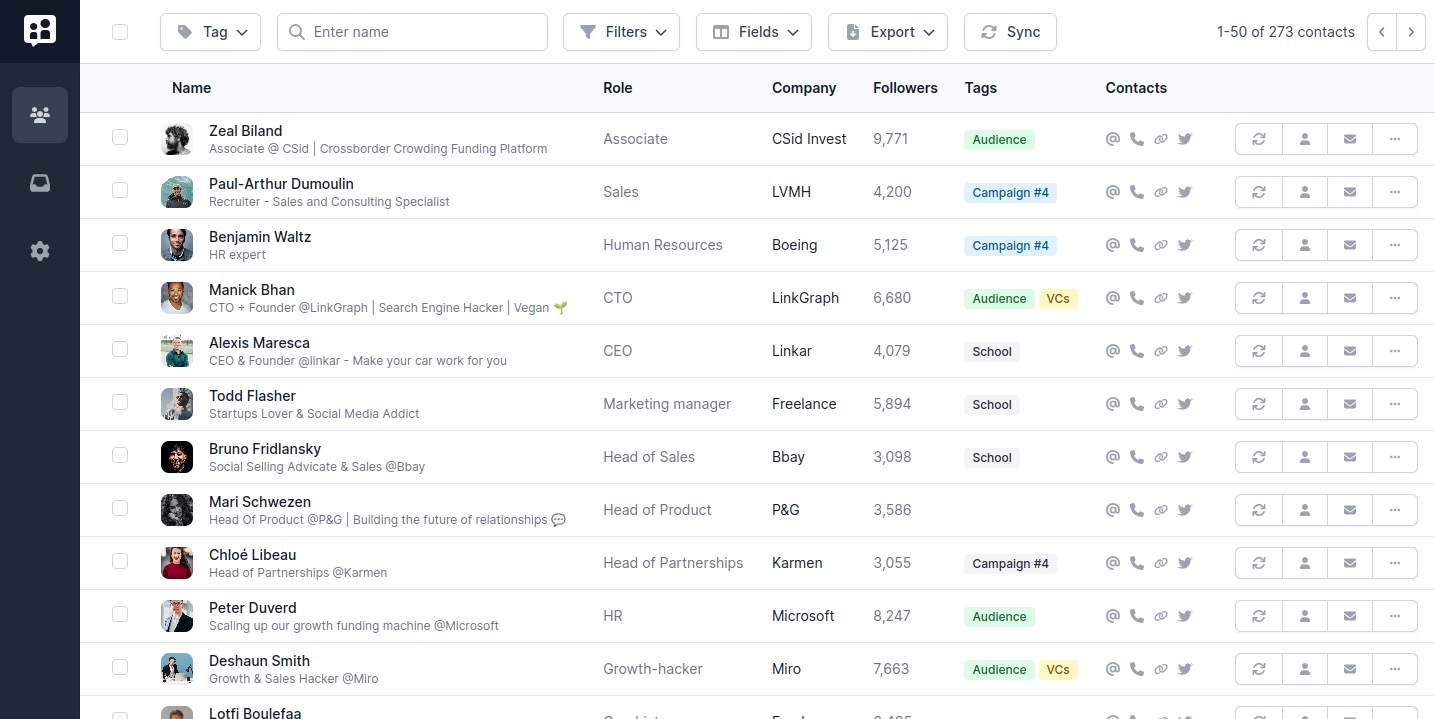Every time you add someone on LinkedIn, they end up in that black hole that you call your network.
But, can we honestly call this a professional network?
Have you invested the time in building trust and made yourself useful enough that they will reciprocated and reciprocate?
Now, imagine being top of mind of all your connections, having them bring you valuable deals on repeat.
Poked’s raison d’être is to make you so good at nurturing your network that you reach this central position in their network. And the first step to rocking your network is to have it organized.
Let’s see 5 major ways to organize your LinkedIn contacts…
1. Tags to clean your LinkedIn network
Some categories are universal:
- University buddies
- Friends and Family
- Previous job’s co-workers
They are people that are in your network and that you know personally. But chances you’ll ever do business with them are thin, and removing them would be at the risk a “Why did you unfriend me?” type discussion.
Marking them under one tag is useful mostly as a way to see things clearly. This anti-tag, if you will, will allow you to search contacts that don’t have that tag, saving you time.
To filter out these contacts, we recommend filtering everyone you connected with before your last meaningful job, let’s say. Eventually, browse through them to see if anyone’s working in a company or industry meaningful to you, and remove them from the selection.
[image of a select by connection date selection]
2. Tags to organize your LinkedIn network
It is not necessary to have a tag for everyone. Being un-tagged is an indication in itself. But we want to draw some main categories of people, and a process on how to deal with them. Let’s see a few:
- VIPs. People that matter to you, with whom you want to keep in touch. Add a reminder on these people to be warned every time 6 month go by without a message from their part.
- Audience. On the other end of the spectrum, these are people you have a top-down relation with. Single this category out to promote a post or a product, when to occasion arises.
- Current clients. Keep an eye on your current clients, nurture the relationship, drop a like on their posts, once in a while.
My go-to question before creating a tag is: How do I use it? If no clear answer, it’s OK to postpone.
What do your tags look like? If you have an interesting scenario that could be turned into a blog article, let us know!
3. Tags to process your day-to-day
Dynamic tags follow a “If … then …” rule.
For instance: If I have a new connection then assign the #new-connection tag.
We use these rules to create dynamic tags that allow you to process what’s entering your LinkedIn account. Here are some useful way to use them:
- Connection request accepted. It’s easy to forget people you add on LinkedIn. Never fail to follow-up on people you’ve invited by marking those until you process them.
- You accepted a new connection. How do you process it? Tag them, add a note eventualy, if they haven’t yet, proactively say “hi”.
These are just examples, but you can imagine a lot of use-cases.
4. Referral Tags to have some context
Tag the people that you met in a specific context to be quickly reminded of where you met them. Some examples of contexts can be:
- Met in a specific online community (Slack, forum, website)
- Met at an in-real-life event
- Did some school/training together
- Part of a professional group
Don’t be afraid to be too explicit: Building your professional network is a long-term game, and things seem obvious today will be life-savers in a couple of months, years, or decades.
If you want to go deeper on context, consider taking notes on your contacts. We have a 10 Notes that help building a strong professional network article, that’ll help you do it efficiently.
5. Tags can evolve with time
This last category concerns anyone with a process in mind: Recruiters, salespeople, events organizers, etc.
Evolving tags have an initial state, branch out in various direction, and reach a final state.
Let’s take a basic sales prospection example. The Tag is called “Sales Prospection #1”
- Step 1. Message sent.
- Step 2. If Answer
- Step 3: Positive answer
- Step 3: Negative answer
- Step 2: Else, follow-up after 3 days:
- Step 3: Positive answer
- Step 3: Negative answer
- Step 2. If Answer
- Step 1. Message sent.
- Step 2. If Answer
- Step 3: Positive answer
- Step 3: Negative answer
- Step 2: Else, follow-up after 3 days:
- Step 3: Positive answer
- Step 3: Negative answer
- Step 2. If Answer
Now, apply this to any webinar, event, prospection, recruitment, you want to track over time.
Poked makes it easy to organize and nurture your network efficiently, so that it works for you for the next 50 years. You read that right.
Join us and start building your network today.

